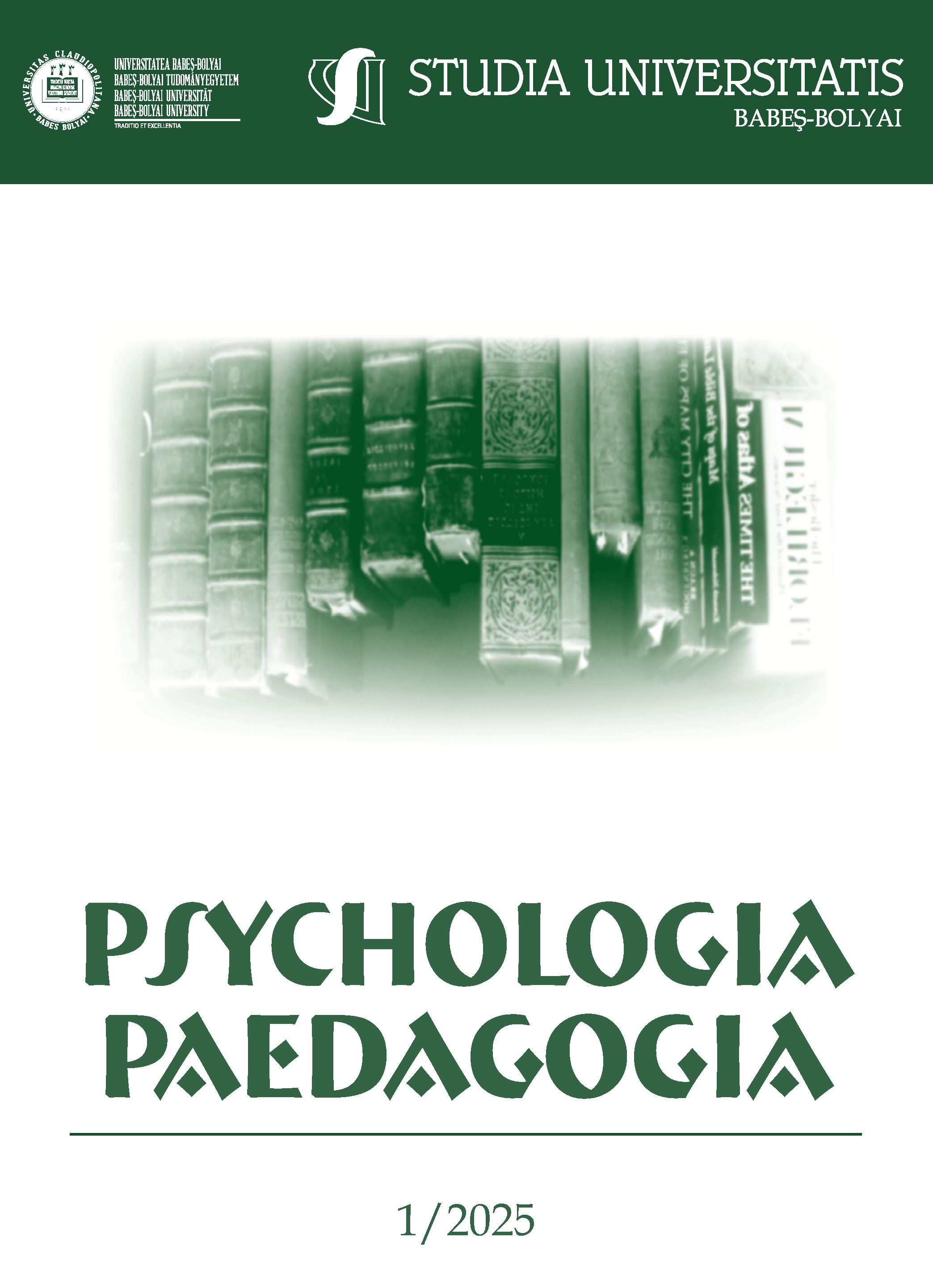The Integration of Mobile Learning in Teaching English for Law Enforcement. A Case Study
DOI:
https://doi.org/10.24193/subbpsyped.2025.1.12Keywords:
mobile learning, MALL (mobile-assisted language learning), mobile apps, student-centered learning, self-regulated learning, ELT, English for Law EnforcementAbstract
As the world entered the 21st century, mobile devices have taken over a large part of our daily lives, being used not only as communication tools, but also as instruments that allow easy access to information. Even if these devices have not yet been formally introduced into language teaching and learning, still they have been used in educational setting for a while now, at least informally. Against this backdrop, the present paper starts with a literature review of concepts such as mobile learning and MALL (mobile assisted language learning) and then shifts focus to the context of teaching English for Law Enforcement, while attempting to briefly investigate how mobile devices can be employed in such an environment, what advantages and disadvantages the use of mobile devices can bring along in language education, as well as to what extent these gadgets can enhance the students’ learning autonomy.
References
1. Allyson, F. H. & Winne P.H. (2001). CoNoteS2: A Software Tool for Promoting Self-Regulation. Available: http://www.tandfonline.com/doi/pdf/10.1076/edre.7.2.313.3868
2. Armstrong, J.S. (2012). Natural learning in higher education. Encyclopedia of the Sciences of Learning. Heidelberg: Springer.
3. Beatty, K. (2010). Teaching and Researching Computer-Assisted Language Learning. Harlow: Pearson/Longman, 2nd Ed.
4. Beechler, S. & Williams, S. (2012). Computer Assisted Instruction and Elementary ESL Students in Sight Word Recognition. International Journal of Business and Social Science, vol. 3, no. 4.
5. Boekaerts, M. & Corno, L. (2005). Self-regulation in the classroom: A perspective on assessment and intervention. Applied Psychology: An International Review, vol. 54, no. 2, pp. 199-231.
6. Conroy, M.A. (2010). Internet tools for language learning: University students taking control of their writing. Australasian Journal of Educational Technology, vol. 26, no. 6, pp. 861-882.
7. deHaan, J. & Johnson, N.H. (2012). Enhancing the scenario: Emerging technologies and experiential learning in second language instructional design. International Journal of Learning, vol. 18, no. 4, pp. 321-334.
8. Diaz, D. P. & Bontenbal, K. F. (2000). Pedagogy-Based Technology Training. In P. Hoffman, and D. Lemke (Eds.), Teaching and Learning in a Network World, Amsterdam, Netherlands: IOS Press, pp. 50-44.
9. El-Hussein, M.O.M. & Cronje, J. C. (2010). Defining Mobile Learning in the Higher Education Landscape. Educational Technology & Society, 13 (3), pp. 12– 21.
10. Godwin-Jones, R. (2011). Emerging technologies: Mobile apps for language learning. Language Learning & Technology, 15(2), pp. 2-11.
11. Holec, H. (1981). Autonomy and Foreign Language Learning. Oxford: Pergamon Press.
12. Kukulska-Hulme, A. & Shield, L. (2008). An overview of mobile assisted language learning: From content delivery to supported collaboration and interaction. ReCALL, 20(3), pp. 271-289.
13. Kukulska-Hulme, A. (2009). Will mobile learning change language learning? ReCALL, 21(2), pp.157-165.
14. Kukulska-Hulme, A. (2012). Mobile Learning and The Future of Learning. International HETL Review, 2, pp.13-18.
15. Liu, M. et al. (2014). Mobile learning and English language learners: a case study of using iPod touch as a teaching and learning tool. Journal of Interactive Learning Research, vol. 25, no. 3. Available: https://www.edb.utexas.edu/minliu/?page_id=20
16. Long, C. et al. (2013). The study of student motivation on English learning in junior middle school—a case study of No. 5 Middle School in Gejiu. English Language Teaching, vol. 6, no. 9, pp. 136-145. Available: www.ccsenet.org/journal/ind ex.php/elt/article/download/29652/17589, https://doi.org/10.5539/elt.v6n9p136.
18. Mo, M. & Zhang, J. (2012). Mobile phone addiction’s influence to the college students’ mobile learning and the matching guidance. Modern Distance Education, vol. 143, no. 5, pp.80-84.
19. Ormrod, J. E. (2000). Educational psychology: Developing learners. Upper Saddle River, NJ: Merrill.
20. Paris, S., Paris, A. (2001). Classroom Applications of Research on Self-Regulated Learning. Educational Psychologist, vol. 36, no. 2, pp. 89-101.
21. Pielmuș, C. (2012). English for Policing Purposes. An English Language Coursebook for Law Enforcement Students and Professionals. Craiova: Editura Sitech.
22. Pielmuș, C. G. (2018). Innovation in Teaching English for Law Enforcement: A Technology-Integrated Approach. Proceedings of The International Scientific Conference "SOCIETY, INTEGRATION, EDUCATION - SIE2018, 25-26 May" - Innovation in Language Education, pp. 566-579, Rezekne Academy of Technologies, Latvia. Available: https://conferences.rta.lv/index.php/SIE/SIE2018/paper/view/1699.
23. Shih, R. C. (2011). Can Web 2.0 technology assist college students in learning English writing? Integrating Facebook and peer assessment with blended learning. Australasian Journal of Educational Technology, vol. 27, no. 5, pp. 829-845.
24. Yiping, W. & Lei, W. (2010). The practice of students-centered teaching mode. Available: http://wenku.baidu.com/link?url=uMkwOzGDsNrIpW9IuPVxjxryymPaJAPLKQcCYNvQn_qN4wPhCrsz52v3fpn5x-x3kufZvDIdUDWFizFllM0ERbZM9ohRnEdPJU8MDXlPrrG
25. Sudhana, K. M. (2015). Contextual diversity and rule-based adaptive e-learning system scheme. International Journal of Emerging Technologies in Learning, vol. 10, no. 5, pp. 72–76. Available: http://dx.doi.org/10.3991/ijet.v10i5.4799
26. Suzan, K. (2008). Development of e-learning Content and Delivery for Self Learning Environment: Case of Selected Rural Secondary Schools in Tanzania. No 2008:04; ISSN 1650-2140; ISBN 978-91-7295-135-8.
27. Traore, M. & Kyei-Blankson, L. (2011). Using Literature and Multiple Technologies in ESL Instruction. Journal of Language Teaching and Research, vol. 2, no. 3, pp. 561-568.
28. Wang, J. (2012). The use of e-dictionary to read e-text by intermediate and advanced learners of Chinese. Computer Assisted Language Learning, vol. 25, no. 5, pp. 475-487.
29. Wang, X. & Wu, A. (2012). Mobile phone addiction behavior of college students: causes and countermeasures. Journal of Chongqing University of Posts and Communications, vol. 24, no. 1, pp.40-43, 63.
30. Yu, Y. (2016). A study of English learning motivation of less successful students. Contemporary English Teaching and Learning in Non-English-speaking Countries. Available: www.cetljournal.co.uk/article/download/11281/7651
31. Zimmerman, B. J. (1989). Models of self-regulated learning and academic achievement. In B.J. Zimmerman & D.H. Schunk (Eds.), Self-regulated learning and academic achievement: Theory, research, and practice, Springer Series in Cognitive Development. NY: Springer-Verlag.
Downloads
Published
How to Cite
Issue
Section
License
Copyright (c) 2025 Studia Universitatis Babeș-Bolyai Psychologia-Paedagogia

This work is licensed under a Creative Commons Attribution-NonCommercial-NoDerivatives 4.0 International License.


